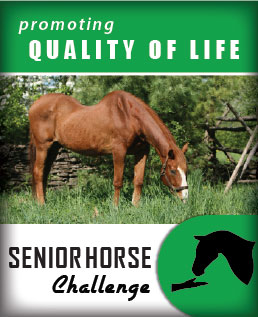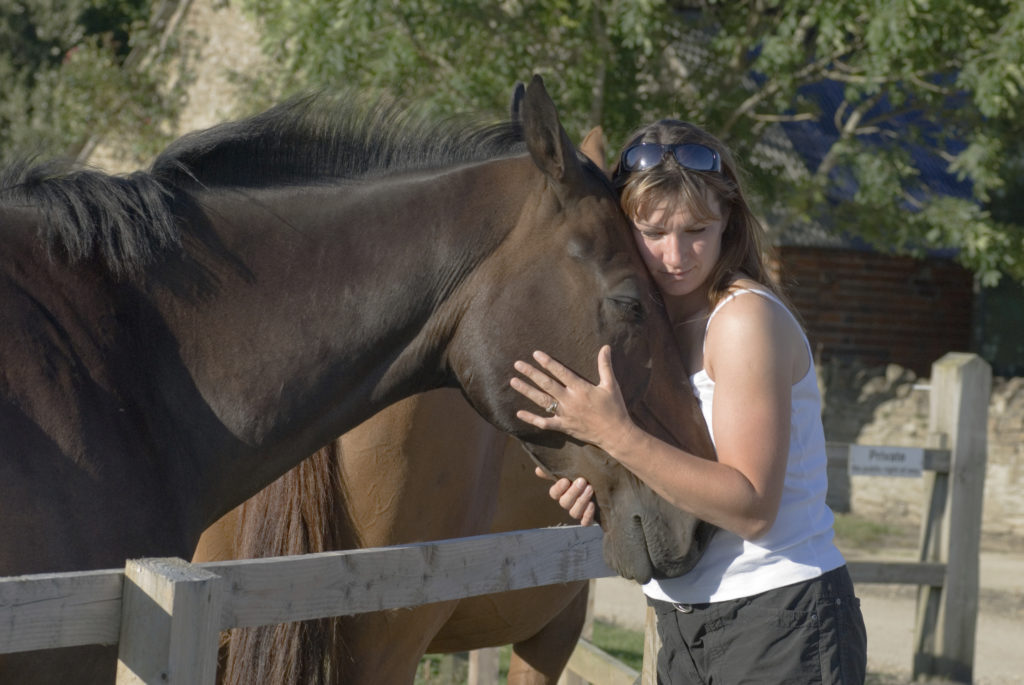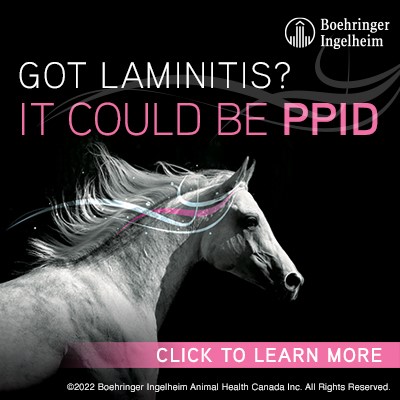Pain Recognition | End of Life

In a perfect world, a senior horse will die naturally in peace, having lived a quality life with minimal suffering. Sadly, this is not always the case and it is our responsibility, the horse owner, to prepare for the day.
Of upmost importance, we need to educate ourselves on the signs that will tell us when it’s time to say good-bye. It is our duty to plan ahead and educate ourselves on how quality of life can be assessed.
Veterinarians act as the advocate for the horse. They are here to support us through this transition time and are an important resource for us, especially as signs of pain and suffering begin to emerge.
Questions for Your Vet
Questions to discuss with your veterinarian to allow you to be objective as possible in order to help determine your horse’s options:
- How much suffering (pain and discomfort) is the horse experiencing and if any, what are its chances for recovery?
- What “quality of life” is achievable for the horse?
- Can the care necessary for the horse’s condition be provided and successfully maintained?
- What veterinary costs will be incurred throughout treatment and recovery?
Pain Recognition

As a prey species, horses are predisposed to hide pain so as not to attract the attention of predators. Horses can be extremely stoic and not show the signs of pain until it becomes severe.
Often times with senior horses, chronic pain can cause depression and stress. It is important to watch for changes in behavior or attitude as your horse ages.
Be observant. Look for the signs of pain.
BE AWARE OF SIGNS OF PAIN IN YOUR SENIOR HORSE
- a horse that normally greets you at the front of the stall is now hiding at the back
- rigid posture
- guarding part of their body or reluctance to be handled
- head lowering, squinting eyes, limp ears
- teeth-grinding
- increased flight behavior
- aggression
- more subdued than usual
- decrease in responsiveness
- flaring of nostrils
- looking back at the flank
- restlessness
- stoic or pained expression, dull eyes
- awkward tail carriage or
- aggressively
- swishing tail
- decreased performance
- reluctance to perform tasks which have already been mastered
- reluctance to move
- prolonged periods of lying down
- reluctance to drink cold water (dental pain)
- loss of appetite
End of Life Decision – It’s not about you!

The practice of intentionally ending a life in order to relieve pain and suffering is Euthanasia. The word derives from the Greek language and means “a good death.”
When a horse is suffering from an age-related ailment or a chronic injury to the point where quality of life or cost of care is prohibitive, Euthanasia is the kinder option than unnecessarily letting your horse suffer.
It is critical that we remove ourselves from the picture and think about what is best for the horse.
While planning ahead for the inevitable may be somewhat painful, understanding the process and knowing ahead of time who to turn to for help will make the decision easier, especially when our minds are clear and free of emotion.
The American Association of Equine Practitioners (AAEP) provides guidelines to the question ‘When is the right time?’ The AAEP recommends that the following guidelines be considered in evaluating the need for humane euthanasia of a horse. The attending veterinarian is able to assist in making this determination, especially regarding the degree to which a horse is suffering. Guidelines are listed below to assist in making humane decisions regarding euthanasia of horses.
A horse should not have to endure the following:
- Continuous or unmanageable pain from a condition that is chronic and incurable.
- A medical condition or surgical procedure that has a poor prognosis for a good quality of life.
- Continuous analgesic medication and/or box stall confinement for the relief of pain for the rest of its life.
- An unmanageable medical or behavioral condition that renders it a hazard to itself or its handlers.
Euthanasia: The method of Euthanasia must be “quick, cause minimal pain or distress and render the horse immediately unconscious.” Acceptable euthanization methods (according to the Code of Practice for the Care and Handling of Equines) include:
- Lethal injection (chemical) administered by a veterinarian, is one of the most commonmethods performed (The horse becomes anesthetized, and therefore unconscious, to such a degree that its heart stops beating and death follows.)
- Penetrating captive bolt deployed by a trained individual
- Free bullet via a gun executed by a skilled individual
When discussing euthanasia options with your vet, disposal methods should also be taken into consideration in order for prompt removal and disposal of the body. Decisions regarding proper disposal and management options can vary, and the laws that govern them can differ according to where you reside. It is recommended that you check with your municipal bylaws beforehand.
It is not easy to say good-bye to a dear friend, but in the end, it’s about doing what’s best for your four-legged companion.






